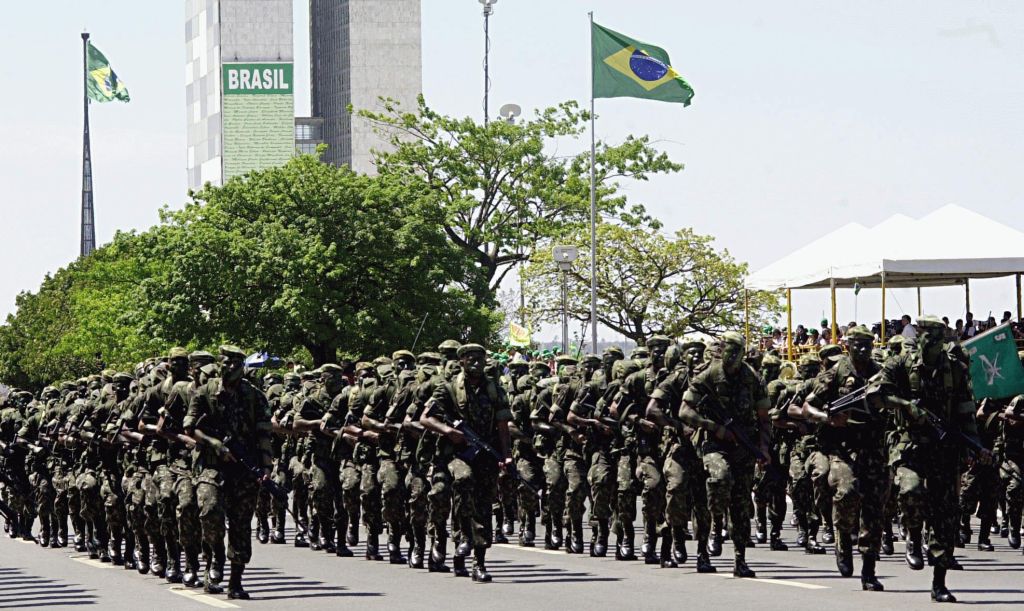As Brazil’s President Dilma Rousseff completes her first full year in power, the country shows every sign of retaining its place as the regional superpower in Latin America, as 2012 unfolds. This is helped in no small measure by the size of the country’s armed forces. These currently comprise around 305,000 personnel spread across the Army, Navy and Air Force. The country is in the process of performing a major recapitalization of its three armed services with a raft of new equipment procurement and upgrade initiatives.
The Brazilian armed forces have demonstrated their capability to project power far beyond the country’s borders, as illustrated most recently during the deployment of Brazilian troops to support peacekeeping operations in Haiti. However, at home, in 2010 Army and Marine units were deployed in Rio de Janeiro to assist local police in resting control of local Favela shanty towns from illegal narcotics gangs.
At the strategic level, although Brazil has renounced the development of chemical and biological weapons, its relationship with nuclear weapons continues to be nuanced. In the past, the country has maintained a nuclear weapons programme, primarily as a result of its regionally geopolitical rivalry with Argentina. Despite this nascent nuclear weapons programme being concluded, the country has, at times, clashed with the International Atomic Energy Authority (IAEA) regarding the inspections of its uranium supply plant for its growing nuclear power industry outside Rio de Janeiro.
At the commercial level, Embraer continues to dominate the country’s military aerospace sector, much as it does in the domestic-commercial civil aircraft sector, while emerging as a major player in the international military and civil aviation markets The firms Super Tucano turboprop trainer and light attack aircraft continues to sell well, and the company is also developing the turboprop KC-390 mediumlift transport and refuelling aircraft. Along with its involvement in military aerospace, the company has widened its activities to become involved in domestic military radar and surveillance markets.
In terms of procurement initiatives, major acquisitions of new equipment are occurring across the Brazilian Army, Navy and Air Force. The Brazilian Army is currently in the process of receiving Main Battle Tanks (MBTs) and accompanying armoured support and training vehicles, new armoured personnel carriers, medium-lift helicopters, and has procurement plans in place to procure new armoured vehicles. The Brazilian Navy is currently inducting new Armoured Personnel Carriers to equip its Marines, along with receiving new medium-lift helicopters, upgraded carrier-based fighter bombers and carrier on-board delivery aircraft. Over the long term, the force plans to acquire new conventional submarines, and frigates. Finally, the major acquisition programmes for the Brazilian Air Force include the purchase of up to 156 new Multi-Role Combat Aircraft (MRCA); a competition that has been delayed on a number of occasions, but which may see the acquisition of a new aircraft by the end of 2012. Away from this competition, the air force is upgrading existing fighter aircraft; purchasing new transport and VIP aircraft; and acquiring new helicopters.










